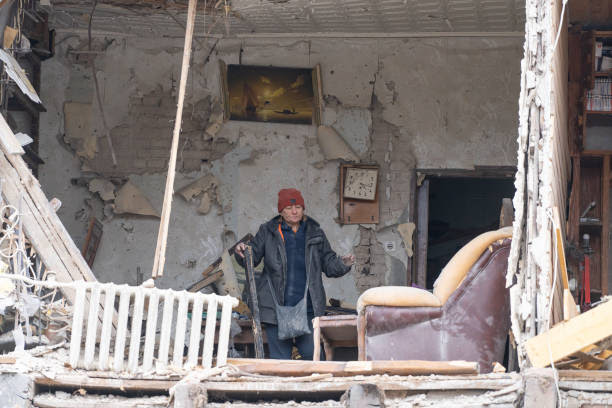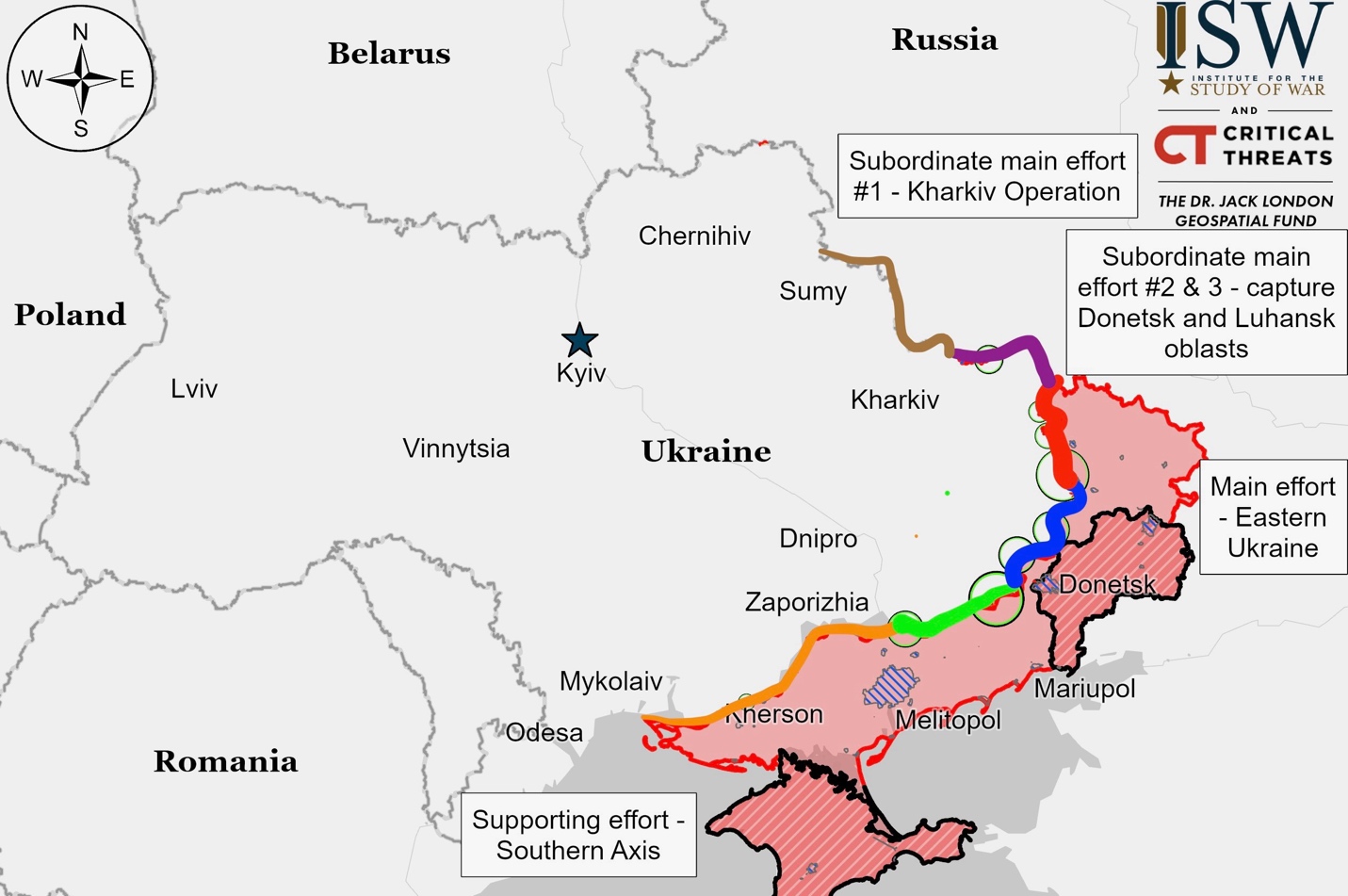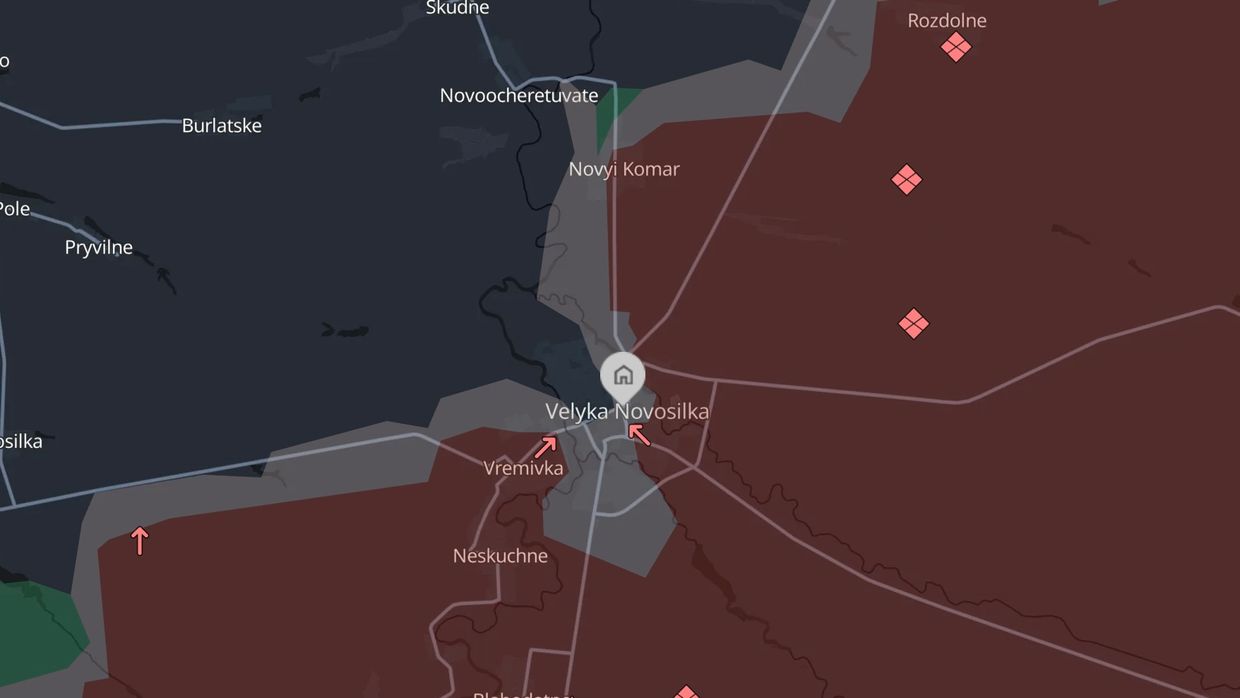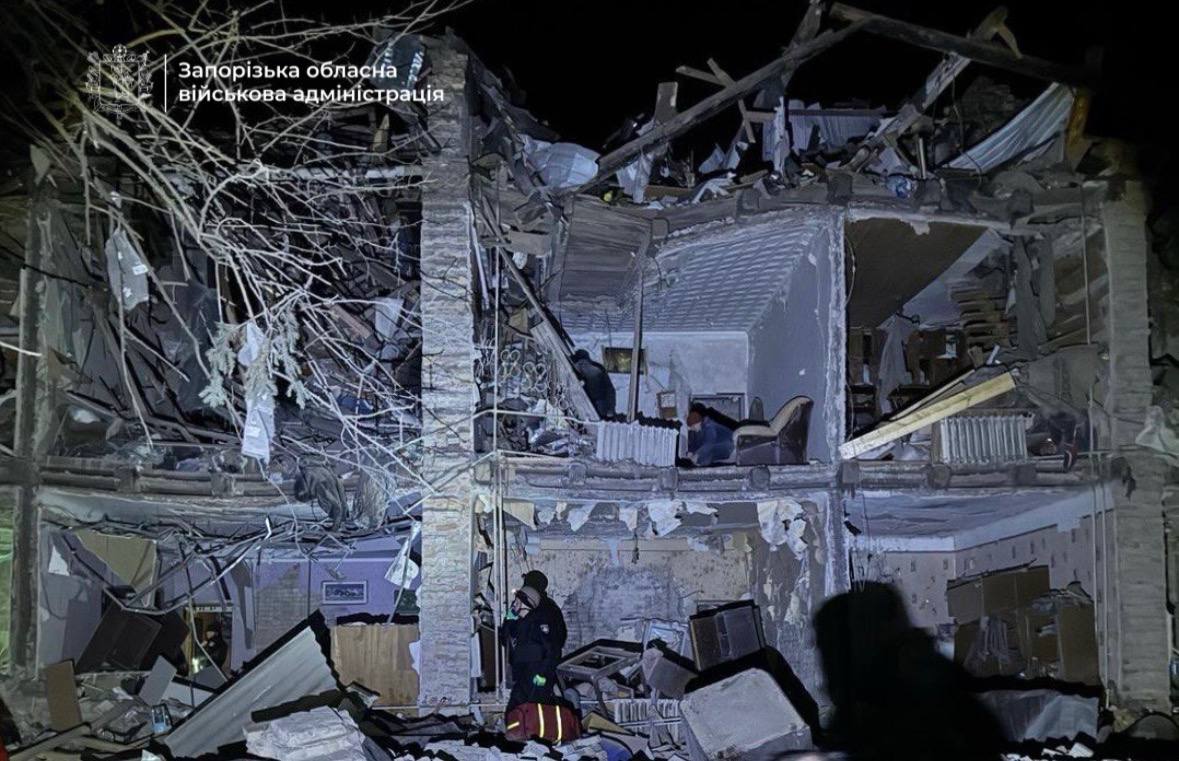Summary of the Day:
Russia plans to significantly expand its military capabilities in Kursk Oblast through increased North Korean support. Ukrainian intelligence chief Kyrylo Budanov reports North Korea will deploy missile and artillery troops along with substantial weapons systems, including 120 M-1989 Koksan artillery units and M-1991 MLRS, with plans for 120 more of each. Additionally, North Korea intends to deliver 150 KN-23 ballistic missiles in 2025, following a previous delivery of 148 missiles in 2024.
The Kremlin is showing growing concern over Russia’s economic stability due to the ongoing war. Reuters sources indicate some Russian elites favor ending the conflict through negotiations to address mounting economic issues. While Putin reportedly believes he has achieved key objectives, including securing a land bridge to Crimea, his willingness to end the war remains unclear.
Ukrainian officials are investigating the execution of six unarmed Ukrainian prisoners of war by Russian forces in Donetsk Oblast, with the fate of a seventh POW unknown. This incident continues a pattern of Russian forces conducting frontline executions with apparent command complicity.
Russian forces have made territorial advances near Toretsk and Pokrovsk while implementing new protective measures for industrial facilities in border regions against Ukrainian strikes.
Picture of the Day:
 A woman stands amid rubble following a Russian missile strike in Zaporizhzhia, Ukraine. The strike killed 1 person and injured a further 45, including a child. (Zaporizhzhia Regional Military Administration/Anadolu via Getty Images)
A woman stands amid rubble following a Russian missile strike in Zaporizhzhia, Ukraine. The strike killed 1 person and injured a further 45, including a child. (Zaporizhzhia Regional Military Administration/Anadolu via Getty Images)
Beyond Ukraine – The March Towards World War
In a significant diplomatic exchange, NATO Secretary-General Mark Rutte and new US Secretary of State Marco Rubio discussed key defense issues following Donald Trump’s inauguration as the 47th US president. The conversation centered on Ukraine’s war situation and the critical need for increased European defense spending. Rutte acknowledged Trump’s demands for higher NATO defense contributions as “absolutely fair,” recognizing Europe’s shortfall in meeting military funding targets. The discussion highlighted growing concerns about Russia’s military actions and their potential impact on global security, with particular emphasis on protecting NATO’s eastern members, especially the Baltic states, who are already exceeding NATO’s 2% GDP defense spending target due to concerns about possible Russian aggression. This diplomatic exchange underscores increasing tensions in transatlantic relations and heightened worries about maintaining global peace, particularly in Eastern Europe.
Former President Trump, speaking at the World Economic Forum in Davos, suggested lowering global oil prices through OPEC could end Russia’s invasion of Ukraine “immediately” by depleting Russia’s war funding. He proposed increased U.S. oil drilling as another strategy to reduce Russian oil influence. The Kremlin dismissed Trump’s threats of additional sanctions, with spokesman Peskov noting Russia remains open to “equal and respectful” dialogue with the U.S.
The Russian spy ship Yantar was detected off British shores on Monday, following a previous encounter in November when it was chased away by the Royal Navy submarine HMS Astute. UK Defense Secretary John Healey revealed that Yantar, equipped with deep-sea surveillance capabilities and tools for accessing secret communication cables, was tracked for two days before entering Dutch waters. This incident prompted Britain to strengthen its maritime defenses, including deploying patrol aircraft and AI systems to protect undersea infrastructure in the Baltic Sea. The disclosure of submarine movements, typically classified, indicates Britain’s serious concern about Russian naval activities near NATO territory. While recent undersea cable damages have raised sabotage concerns, intelligence officials currently don’t suspect foul play. The incident highlights growing tensions between NATO and Russia in European waters, potentially impacting maritime security and international relations.
Following the recent overthrow of Russian-backed dictator Bashar al-Assad in Syria, Russian cargo ship Sparta II has finally docked at Tartus naval base after weeks of delay. The ship, intended to evacuate Russian military equipment, had been drifting since January 5. In a significant blow to Russian military presence in the Mediterranean, Syria has canceled Russia’s 49-year operating lease for the Tartus base, which was signed in 2019. This development marks a major shift in regional power dynamics, as Russia loses its strategic Mediterranean port. The situation could impact Russia’s military capabilities in the region, while potentially reducing tensions between Syria and Western nations.
Three Ukrainian crew members from the Galaxy Leader commercial vessel have been freed from Houthi captivity in Yemen through a joint operation by Ukraine’s Foreign Ministry and military intelligence. The release, facilitated by Oman, was part of a broader release of the ship’s 25-person multinational crew, including sailors from Romania, Mexico, Bulgaria, and the Philippines. The vessel was initially captured in November 2023 during Houthi attacks on Red Sea shipping. Their release comes amid de-escalation efforts, though future stability remains uncertain after President Trump’s recent designation of the Houthi movement as a terrorist group.
The Path to Peace
U.S. President Donald Trump expressed desire for an immediate meeting with Russian President Putin to end the Ukraine war. Trump mentioned exploring nuclear arms reductions and claimed Ukrainian President Zelensky was open to peace discussions. Zelensky confirmed talks were underway to meet with Trump, emphasizing Ukraine’s desire for a fair and reliable end to the war this year, not just a quick resolution.
Ukrainian President Volodymyr Zelensky stated that ending the Russia-Ukraine war should be a victory for Donald Trump, not Vladimir Putin. Zelensky emphasized that Russia, despite its weapons and manpower, failed to fully occupy Ukraine. He warned that Putin threatens Europe and NATO countries and stressed that any peace agreement must prevent future Russian aggression. While Trump has expressed intent to meet Putin quickly if elected and his team aims to preserve Ukraine’s independence, both Kyiv and Moscow would need to make concessions for peace, according to U.S. Secretary of State Marco Rubio.
Ukrainian President Volodymyr Zelensky clarified his Davos comments about European peacekeepers. He explained that the previously mentioned figure of 200,000 peacekeepers was not fixed, and the actual number would depend on Ukraine’s military size. Zelensky noted that if Ukraine reduces its forces, which currently need to be around one million to counter Russian aggression, other troops would need to fill that gap. He emphasized that NATO membership would be the most cost-effective solution for peace, though some members including the U.S., Germany, Slovakia, and Hungary remain hesitant. The peacekeeping initiative has gained support from French President Macron, UK Prime Minister Starmer, and U.S. President Trump, who has urged Europe to take greater responsibility for Ukraine’s security.
NATO Chief Mark Rutte stated at the World Economic Forum in Davos that Russian President Putin has no authority over NATO membership decisions. Rutte emphasized Ukraine’s NATO membership as crucial for lasting peace, warning against repeating Minsk agreement failures. He urged the U.S. to continue supplying weapons to Ukraine, with Europe offering to handle financial costs.
Situation On The Land, Sea, and Air in Ukraine
Ukrainian officials report Russian forces executed six unarmed Ukrainian prisoners of war in Donetsk Oblast, as evidenced by social media footage under investigation by Ukraine’s Human Rights Commissioner, Attorney General’s Office, and prosecutors. The fate of a seventh POW shown in the footage remains unknown. This incident adds to a pattern of Russian forces conducting frontline executions of Ukrainian POWs, with apparent complicity from Russian military commanders. Ukraine’s Ombudsman Lubinets has alerted the UN and Red Cross, noting that Russia has executed over 100 POWs in 2024 alone, violating the Geneva Conventions. Reports of torture and abuse of Ukrainian captives in Donetsk Oblast have increased recently.

Ukrainian Operations in the Russian Federation – Initiative Russia
Russian forces advanced near Tolstiy Lug in Ukraine’s Kursk Oblast. They reportedly attacked settlements including Pogrebki, Nikolskiy, Krugkenkoye, Kurilovka, and Guyevo, with claims of entering Guyevo and Viktorovka, though these claims remain unconfirmed. A Ukrainian commander noted Russian forces conduct daytime infantry assaults without equipment in this area.
Ukraine launched a significant drone attack on Russia, with approximately 10 long-range kamikaze drones targeting the Smolensk Aviation Plant on January 21, as part of a larger 50-drone offensive. While Russian officials claimed they intercepted all drones over various regions including Bryansk, Rostov, Voronezh, Saratov, and Smolensk, evidence suggests damage occurred at the aviation facility, which produces and modernizes Su-25 military aircraft. A notable video showed a Russian Pantsir S-1 missile intercepting a Ukrainian drone over Smolensk, though the defensive action may have caused additional damage to nearby buildings. The incident highlights both Ukraine’s expanding strike capabilities and the potential collateral damage from air defense operations in populated areas. The Smolensk Aviation Plant, located 270 kilometers north of Ukraine, represents a strategic military target in Russia’s defense infrastructure.
A Ukrainian drone battalion reported striking a Russian Tor air defense system in Belgorod Oblast releasing footage of the attack.
A drone attack sparked a fire at Russia’s Ryazan Oil Refinery, a key facility producing fuel for both civilian and military use. Russian officials reported intercepting 49 drones across multiple regions including Kursk, Bryansk, Belgorod, and occupied Crimea. The strike, part of Ukraine’s strategy targeting Russian energy infrastructure, affected a significant petroleum facility that, despite sanctions, supplies fuel for Russian military equipment including tanks and aircraft.
Kharkiv Front – Initiative Russia
Russian forces conducted limited ground attacks near Kharkiv without gaining territory. Fighting continues north of Kharkiv City near Lyptsi and northeast near Vovchansk.
Luhansk Front – Initiative Russia
Kupyansk
Russian forces continued attacks near Kupyansk without confirmed advances. Russian sources claim advances in northern Dvorichna and plans to move toward Kutkivka. Russian forces are reportedly attempting to advance toward Dovhenke, Zapadne, and Kindrashivka, while also attacking near Petropavlivka. One source noted that stable logistics across the Oskil River are needed for significant Russian advances.
Borova
Russian forces attacked multiple positions near Borova without advancing. Attacks occurred near Lozova, Zeleny Hai, Zahryzove, Pershotravneve, Kopanky, and Novoserhiivka. The Ukrainian Khortytsia Group reported Russian forces using armored vehicles in an attack near Nova Kruhlyakivka.
Lyman
Russian forces attacked near Lyman without advances. Attacks occurred north of Lyman at Zelena Dolyna; northeast at Novolyubivka and Yampolivka; and east at Zarichne, Kuzmyne, and the Serebryanske forest area. Russian sources claim Ukrainian forces counterattacked near Terny and Torske.
Donetsk Front – Initiative Russia
Siversk
Russian forces attacked near Ivano-Darivka, southeast of Siversk, without advances.
Chasiv Yar
Russian forces attacked Chasiv Yar with fighting reported at the central Refractory Plant’s workshops. While Russian sources claimed advances in the area, no confirmed territorial gains were made. A Ukrainian military spokesperson reported that Ukrainian forces had previously struck a Russian troop concentration in nearby Kalynivka on January 9. Russian forces allegedly attempted to move troops through a canal pipe south of Chasiv Yar and reportedly struck a Ukrainian crossing in Kostyantynivka.
Toretsk
Russian forces made limited advances in the Toretsk area gaining ground at the Toretska Mine in northern Toretsk and west of Nelipivka. Russian sources claim to control half of the Toretska Mine and report advances in Krymske. Fighting continues in Toretsk proper and nearby areas including Dyliivka and Krymske.
Pokrovsk
Russian forces advanced north of Novoyeliyzavetivka, southwest of Pokrovsk. While Russian sources claim additional gains near Novoandriivka, Nadiivka, Kotlyne, and Leontovychi, these advances remain unconfirmed. Russia’s Ministry of Defense announced the capture of Solone, though this likely occurred earlier on January 13. Fighting continues across multiple settlements around Pokrovsk, including areas to the east, southeast, south, and southwest of the city, with Russian forces conducting attacks in over a dozen locations including Vodyane Druhe, Myrolyubivka, Lysivka, and Novyi Trud.
Commander-in-Chief Syrskyi reported that the French-trained 155th “Anne of Kyiv” Brigade is showing improvement after earlier performance issues at the Pokrovsk front in Donetsk Oblast. The unit faced controversy when Censor.net revealed cases of mismanagement leading to high casualties and desertions after its November 2024 deployment. While French support was deemed adequate, the brigade’s problems were attributed to Ukrainian leadership. The former commander has been detained, and an investigation is underway. The situation has raised concerns about Ukraine’s initiative to create new Western-supported brigades, as the 155th was meant to be the flagship unit.
Kurakhove Region
Russian forces claimed advances near Kurakhove, including reports of clearing Ukrainian positions near Yantarne and moving past the T-0515 highway west of Petropavlivka, though these gains remain unconfirmed. Russian forces reportedly repelled a Ukrainian platoon assault near Kurakhove. Fighting continues across multiple locations around Kurakhove, with Russian forces attacking near Shevchenko, Andriivka, Dachne, Ulakly, and other settlements. Russian special forces and artillery units are reportedly operating in the Dachne area.
Velyka Novosilka
Russian forces launched a major offensive against Velyka Novosilka, with over 80 attacks reported in the past day. Ukrainian military spokesperson Major Viktor Trehubov acknowledged the risk of encirclement but confirmed Ukrainian forces are not yet surrounded, with Russian forces attempting to control access routes through heavy fire. Their numerical advantage and rotation capabilities pose significant challenges. The nearby Mokri Yaly, Kashlahach, and Shaitanka rivers are limiting Ukrainian mobility and complicating defensive efforts. Russian sources claim advances along the T-0518 highway through central Velyka Novosilka and progress in the northeast and east, though these claims remain unverified.

Zaporizhia Front – Initiative Russia
Russian drone operators are targeting Ukrainian positions near Orikhiv, while Russian forces are remotely mining Ukrainian supply routes near Pyatykhatky. No ground combat was reported in western Zaporizhia Oblast.
Kherson (Dnipro River) Front – Initiative Russia
Russian forces launched limited ground attacks in the Dnipro region of Kherson Oblast.
Ukraine News
Russia launched 4 Iskander-M ballistic missiles at Zaporizhzhia City and 92 drones across Ukraine. Ukrainian forces intercepted 57 drones over multiple regions and disrupted 27 more through electronic warfare. The attacks killed one person and injured 51 in Zaporizhzhia City, with additional infrastructure damage reported in Kharkiv Oblast and residential damage in Kyiv Oblast.
Ukraine’s central bank announced it will raise its key interest rate to 14.5% on January 24, 2024, in response to rising inflation. The rate increase comes as inflation reached 12% in 2024, higher than expected. NBU Chairman Andrii Pyshnyi explained this decision aims to maintain market stability and gradually bring inflation down to their 5% target. The bank forecasts inflation will peak in early 2025 before declining to 8.4% by year-end and reaching 5% in 2026, supported by various economic policies and sector improvements.
Innocent Victims Of War
The casualty count of civilians in the past 24 hours: (Russian War Crimes)
DEATHS: 1 INJURIES: 45
A Russian missile attack on Zaporizhzhia early morning killed one man and injured 45 people, including a two-month-old baby. Four emergency service workers were among those hospitalized. The attack destroyed one apartment building and damaged 30 others. Emergency crews continue searching for potential victims in the rubble.
 A residential building in Zaporizhzhia damaged by a Russian attack. (Ivan Fedorov / Telegram)
A residential building in Zaporizhzhia damaged by a Russian attack. (Ivan Fedorov / Telegram)
Ukraine’s Allies
NATO Secretary General Mark Rutte urged the U.S. to continue supporting Ukraine with weapons at the World Economic Forum in Davos, stating Europe would cover the financial costs. This comes amid concerns about future U.S. aid under a potential Trump presidency.
Life in Russian Occupied Ukraine
Russian forces orchestrated a massive theft of over 33,000 historical artifacts and artworks from two Kherson museums in 2022, marking Europe’s largest museum theft since World War II. Four key figures responsible were identified: Russian military officer Dmitry Lipov, who oversaw the operation, and three Russian-appointed Crimean officials – Sergey Patrushev, Elena Morozova, and Mikhail Smorodkin. The operation, supervised by Russia’s FSB, involved systematically moving collections from Kherson to occupied Crimea, representing not just a physical theft but also an attempt to erase Ukrainian cultural heritage.
Russia News
Putin is increasingly worried about Russia’s economic instability due to the war in Ukraine. Sources indicate some Russian elites favor ending the war through negotiations to address economic concerns. One source claims Putin believes he has achieved key objectives, including securing a land bridge to Crimea and weakening Ukraine’s military, but didn’t specify if he’s willing to end the conflict. Russian opposition media Meduza reports growing dissatisfaction among Russian officials regarding the war’s economic impact, even as the Kremlin attempts to project economic strength despite ongoing financial challenges.
In Russia’s Tuva region, a military police serviceman was detained for assaulting wounded soldiers at military unit No. 55115 in Kyzyl, home to the 55th Motorized Rifle Brigade. Video footage from January 19 shows the officer using a baton and taser on injured soldiers, including one with a cane and another with a reported broken back. The victims were assault unit members recovering from injuries before their scheduled return to Ukraine’s front lines. The Tuvan government confirmed the incident is under investigation by military prosecutors, with authorities promising consequences for those responsible.
Russia’s oil tanker fleet faces mounting pressure as U.S. and U.K. sanctions force vessels to change flags and ownership. Barbados Ship Registry will revoke flags from 46 vessels under U.K. sanctions by January’s end, while Panama’s Maritime Authority is deregistering 68 vessels to comply with international sanctions. The January 10 sanctions, targeting about 200 vessels in Russia’s “shadow fleet,” have led to suspended operations and declining seaborne crude exports. Additionally, Indian banks have reportedly stopped payments for Russian oil imports due to U.S. sanctions.
Russian War Losses (Today/Total)
| Troops +1500 826820 |
Tanks +2 9852 |
Artillery +39 22295 |
Arm. Veh. +11 20508 |
Aircraft 369 |
Heli 331 |
Ships 28 |
Russia Mobilization and Defense Industrial Base
The Republic of Tatarstan has increased its one-time military service contract payments from 2.2 million rubles ($22,000) to 2.8 million rubles ($28,000) to boost recruitment for the Russian Ministry of Defense.
Russian Security Council Chair Dmitry Medvedev met with Bryansk Oblast military officials to discuss increasing air defense production and protecting industrial facilities, including the previously targeted Bryansk Chemical Plant. This move appears aimed at defending Russia’s defense industrial facilities from Ukrainian strikes as Russia’s economy weakens.
Russia’s Allies
Russia plans to expand its military presence in Kursk Oblast with additional North Korean support. According to Ukrainian intelligence chief Kyrylo Budanov, North Korea will deploy missile and artillery troops, along with weapons systems including M-1989 Koksan artillery and M-1991 MLRS. North Korea has already supplied Russia with 120 units of each system since November 2024 and is expected to provide 120 more. Additionally, North Korea plans to deliver 150 KN-23 ballistic missiles to Russia in 2025, following a previous delivery of 148 missiles in 2024. Currently, 12,000 North Korean troops are fighting alongside Russian forces in Kursk Oblast, with 4,000 reported casualties, and are operating these weapons while training Russian forces. U.S. officials expect additional North Korean forces to arrive by mid-March 2025. The region has become strategically significant as Russia attempts to dislodge Ukrainian forces who have held positions there since August 2024.
Source Material
Institute for the Study of War – understandingwar.org
The Kyiv Independent – kyivindependent.com
Kyiv Post – kyivpost.com
